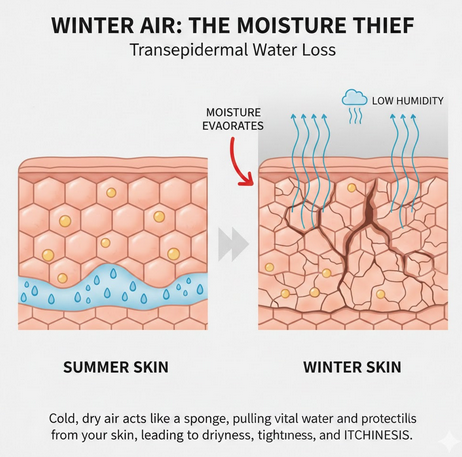The Silent Threat Within: Understanding and Combating Indoor Air Pollution
- OliveHealth

- Jul 23
- 5 min read
by Dr. Ed Fuentes

While we often focus on outdoor air quality, a critical new study highlights that the air inside our homes and workplaces poses a significant, often overlooked, danger to human health. With most people spending up to 90% of their time indoors, Indoor Air Pollution (IAP) is a serious global health threat, responsible for millions of deaths annually. This comprehensive review delves into the sources of indoor pollutants, their alarming health impacts, and the cutting-edge strategies being developed to improve indoor air quality (IAQ).
__________________________________________________________________
The Hidden Sources of Indoor Air Pollution (IAP)
IAP is a complex mixture of various airborne contaminants, and its composition can vary widely depending on the environment and activities within a building. Key sources include:
Human Activities: Everyday actions like cooking (especially with solid fuels), smoking, using cleaning products, and even just walking around can release particulate matter (PM), volatile organic compounds (VOCs), and other gases.
Building Materials & Furniture: Many common materials, from paint and adhesives to particleboard and carpets, off-gas harmful chemicals like formaldehyde and other VOCs.
Electronic Devices: Office equipment such as printers and photocopiers can emit ozone.
Outdoor Air Infiltration: Pollutants from outside can easily seep into buildings, especially if ventilation is poor.
Biological Sources: Mold, fungi, bacteria, viruses, and allergens from pets and dust mites thrive in indoor environments, particularly in damp conditions.
__________________________________________________________________
Major Indoor Air Pollutants and Their Health Impacts
The study identifies a wide array of pollutants found indoors, each with distinct health consequences:
Particulate Matter (PM): Tiny particles (PM10, PM2.5, PM0.1) from cooking, smoking, and fuel combustion can penetrate deep into the lungs and bloodstream, affecting the heart and leading to serious respiratory and cardiovascular diseases. Ultrafine particles (PM0.1) are particularly hazardous.
Volatile Organic Compounds (VOCs): Emitted from various products and building materials, long-term exposure to VOCs can cause headaches, irritation, and even increase cancer risk. Formaldehyde is a common example.
Nitrogen Oxides (NOx): Primarily NO2, these gases from gas stoves and heaters can irritate the respiratory system and contribute to the formation of other harmful compounds.
Ozone (O3): While beneficial in the upper atmosphere, ground-level ozone from outdoor air or electrical devices can irritate the respiratory system and react with other indoor pollutants to form new irritants.
Sulfur Dioxide (SO2): Released from fossil fuel combustion, SO2 can impair respiratory function.
Carbon Monoxide (CO) & Carbon Dioxide (CO2): CO, a product of incomplete combustion, can be deadly at high concentrations, affecting cardiovascular and neurobehavioral processes. CO2, while a natural human metabolite, can cause headaches, fatigue, and difficulty concentrating at elevated indoor levels.
Toxic Metals: Heavy metals like lead, arsenic, and cadmium can enter indoor air from various sources and are linked to a range of serious health issues, including cancer, cardiovascular disease, and nervous system damage.
Aerosols: These can be primary particles or formed from gas reactions indoors. Biological aerosols (bioaerosols) include spores, bacteria, and viruses, which can lead to respiratory infections and allergies.
Radon: A radioactive gas primarily from soil, building materials, and tap water, radon is a significant cause of lung cancer.
Pesticides: Used in building materials and for pest control, semi-volatile pesticides can persist indoors for extended periods and cause acute symptoms like skin irritation, and chronic issues like cancer and asthma.
Biological Pollutants: Allergens (e.g., pet dander, dust mites, pollen, mold) and microorganisms (viruses, bacteria) can trigger allergies, respiratory infections, and other adverse health outcomes.
__________________________________________________________________
Building-Associated Illnesses: SBS and BRI
Poor IAQ directly contributes to "building-associated illnesses," broadly categorized into:

Sick Building Syndrome (SBS): Characterized by general, non-specific symptoms like eye, nose, and throat irritation, headaches, fatigue, and skin dryness. These symptoms typically appear when a person is in a particular building and lessen or disappear when they leave.
Building-Related Illness (BRI): More severe and clinically diagnosable illnesses with an identifiable cause directly linked to indoor air exposure. Examples include Legionnaires' disease and hypersensitivity pneumonitis, often caused by biological agents.
Beyond these, IAP is also a major contributor to acute respiratory infections (especially in children) and various pulmonary diseases like asthma, chronic obstructive pulmonary disease (COPD), and lung cancer, even in non-smokers. Furthermore, exposure to indoor pollutants is strongly linked to cardiovascular diseases (CVDs).

_______________________________________________________________
Advancements in Controlling and Improving Indoor Air Quality
To combat the pervasive threat of IAP, significant efforts are being made in three main areas:
A. Smart Technologies for IAQ Monitoring
The future of IAQ control relies on sophisticated monitoring systems:
Novel Materials for Sensors: The development of advanced materials, particularly 2-D nanostructured materials and metal oxides, is leading to highly sensitive, low-cost, and compact gas sensors. These can detect a wide range of pollutants with greater accuracy and speed.
Internet of Things (IoT)-Based Systems: IoT integration allows for real-time, remote monitoring of IAQ using portable devices. "Electronic noses" (E-noses), which mimic the human sense of smell, are a promising IoT application, using sensor arrays and machine learning to identify and quantify pollutants. Smart-Air devices, for example, combine various sensors with cloud computing to provide continuous IAQ data.
Wireless Sensor Network (WSN)-Based Systems: WSNs, often utilizing ZigBee protocol for low cost and power consumption, deploy multiple sensors across different areas of a building. This provides a comprehensive overview of IAQ distribution, allowing for autonomous and accurate real-time data collection and analysis.
____________________________________________________________
B. Air Purification Technologies
Beyond monitoring, improving IAQ requires effective pollutant removal:
Adsorption Technologies: Carbon-based filters in HVAC systems are effective at removing gaseous pollutants like ozone, VOCs, and particulate matter. However, their efficiency can decrease at low pollutant concentrations and in high humidity.
Non-Thermal Plasma (NTP) Technologies: These methods generate reactive species (radicals, ions) to break down pollutants. While effective for some contaminants, NTP can have poor energy efficiency and may inadvertently form secondary hazardous pollutants.
Advanced Oxidation Processes (AOPs): Technologies like photocatalysis, which use semiconductor photocatalysts (e.g., TiO2) and light to degrade pollutants, are gaining traction due to their ability to break down gaseous pollutants (especially VOCs) into harmless byproducts at ambient conditions, even at low concentrations.
________________________________________________________________
C. Smart Homes for Integrated IAQ Control
The concept of the "smart home" is evolving beyond energy management to actively enhance IAQ. By integrating modern sensor technology with automated systems, smart homes can:
Continuously Monitor: Record climatic parameters and pollutant concentrations automatically.
Automate Responses: Adjust ventilation settings, fan speeds, and temperatures in real-time based on detected pollutant levels.
Provide Remote Management: Allow occupants to monitor and manage their indoor environment through smartphone apps or computers.
_______________________________________________________________
Looking Ahead and More Questions To Ask
The research concludes that IAP is a significant and multifaceted threat to human health, stemming from a combination of human activities, building materials, and outdoor infiltration. While the challenges are substantial, the rapid advancements in sensor technology, IoT-based monitoring systems, advanced air purification techniques, and integrated smart home solutions offer promising strategies for effectively controlling and improving indoor air quality in the future. As we spend more time indoors, prioritizing IAQ will be crucial for public health and well-being.
What aspects of indoor air quality are you most concerned about in your own environment?
Have you ever experienced symptoms you now realize might be linked to poor indoor air quality, like persistent headaches, fatigue, or allergies that worsen indoors? Share your experience!
What was the most surprising or alarming piece of information you learned about indoor air pollution from this article?
Before reading this, were you fully aware of how much time we typically spend indoors and the potential health implications of IAP? What's your biggest takeaway?
The article mentions smart home technology and advanced sensors. Would you invest in such systems for your home, and what features would be most important to you?
Share your thoughts in the comments below!" or "What steps will you be taking to breathe easier indoors?"
Please Email Dr. Ed if you have any consultation questions at : edwin@omegaenv.com
Reference:




Comments